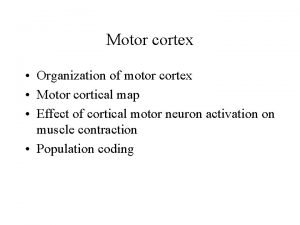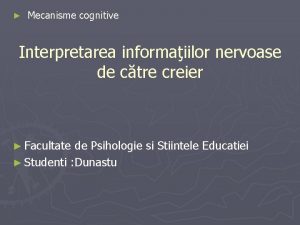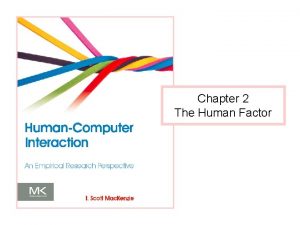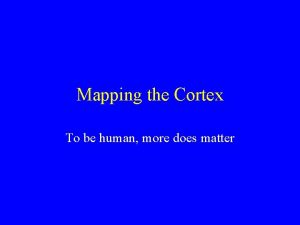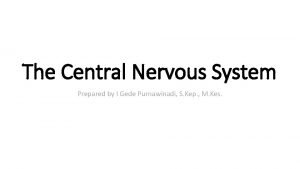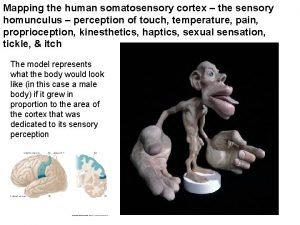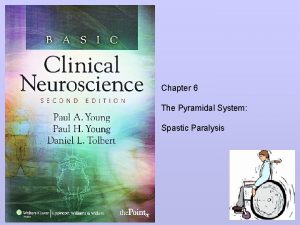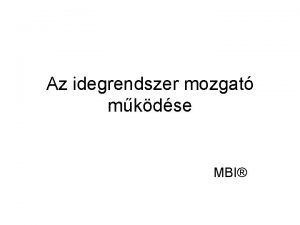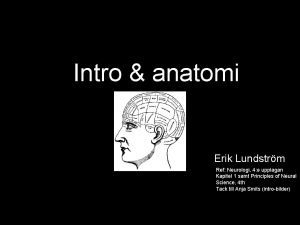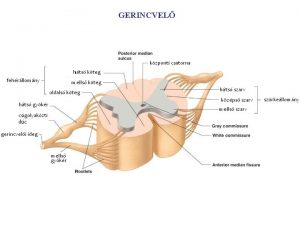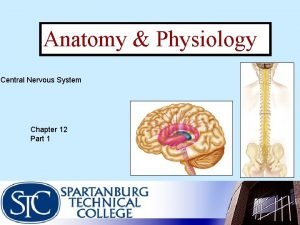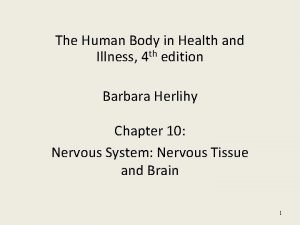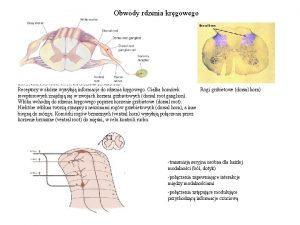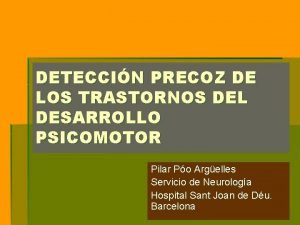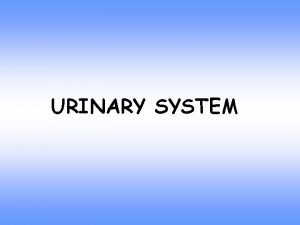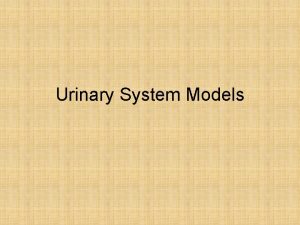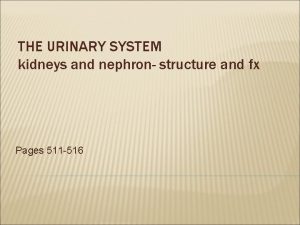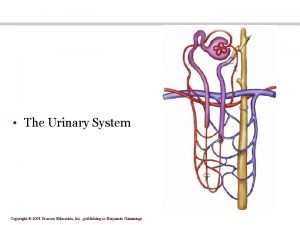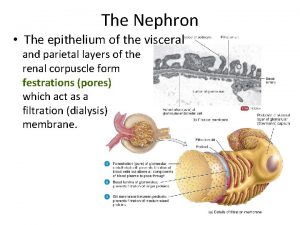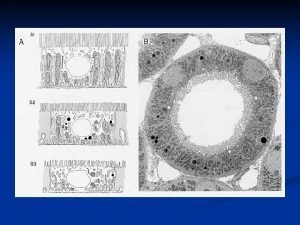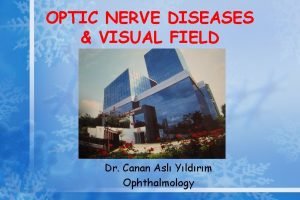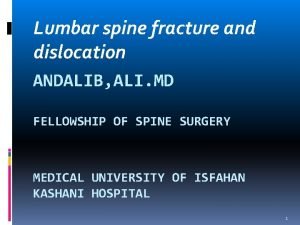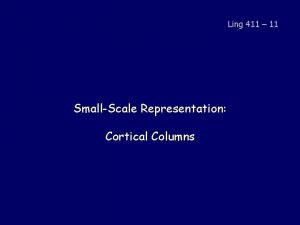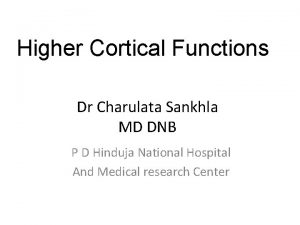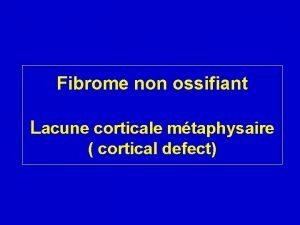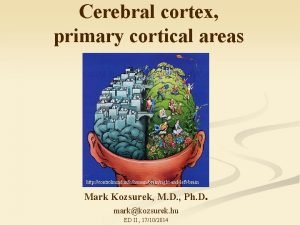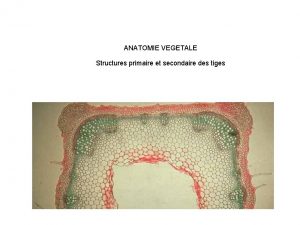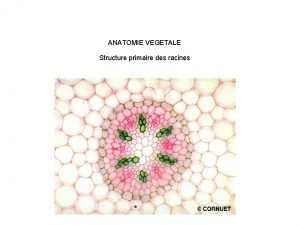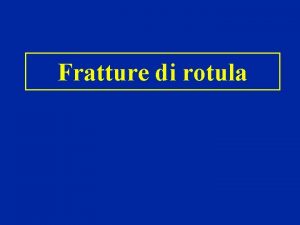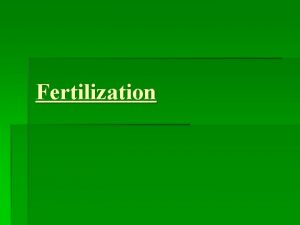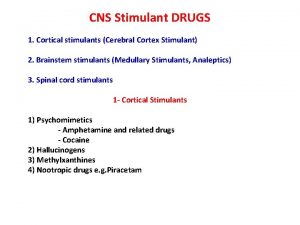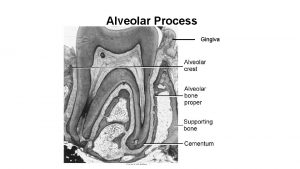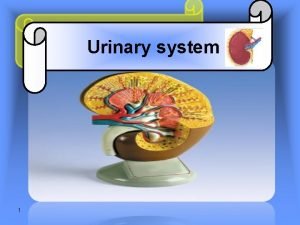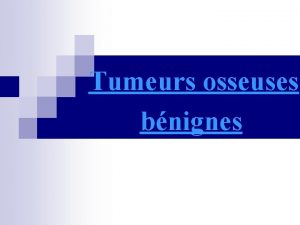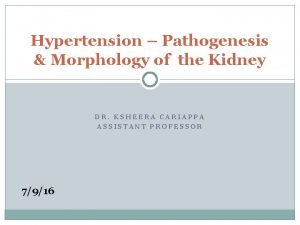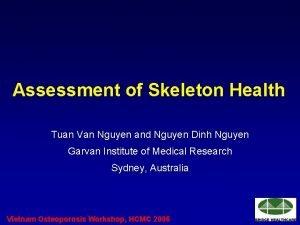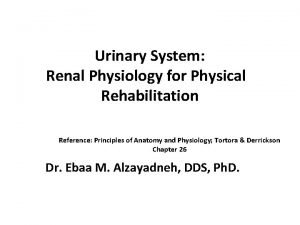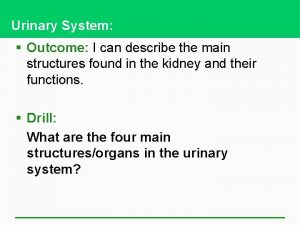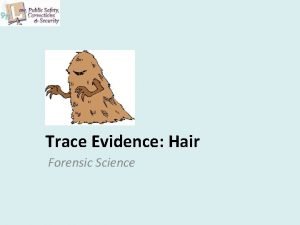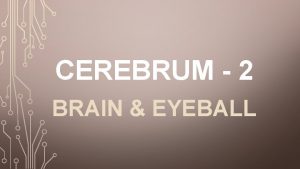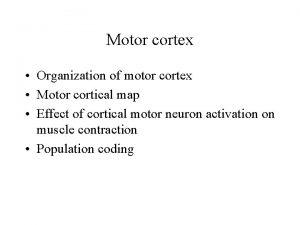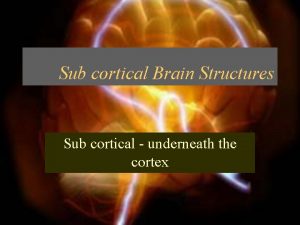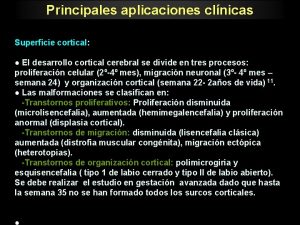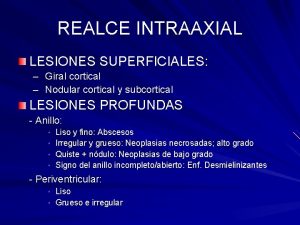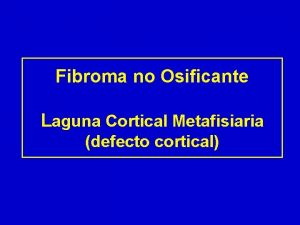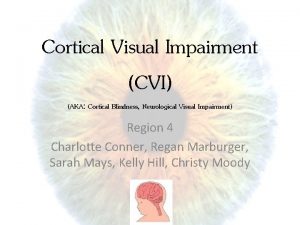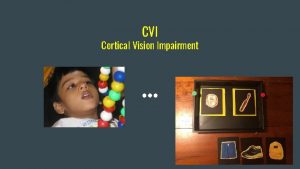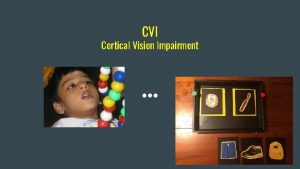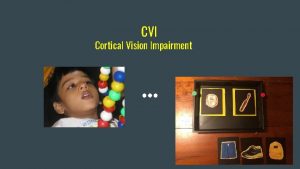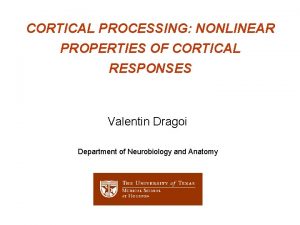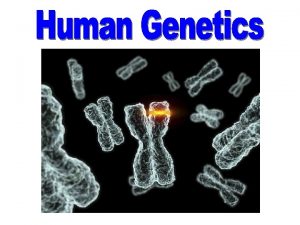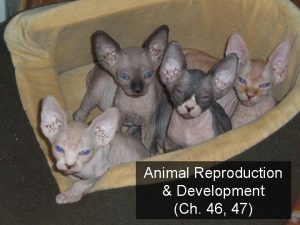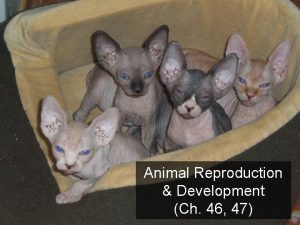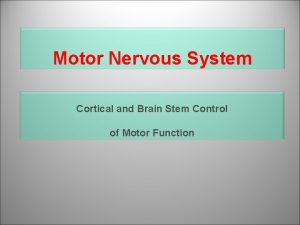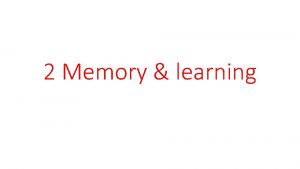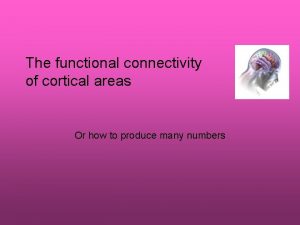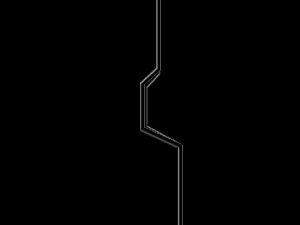Motor cortical areas the homunculus The motor system

























































- Slides: 57

Motor cortical areas: the homunculus The motor system

Major Cortical areas involved in planning and execution of “purposeful” movements

Directional Tuning of MI Cells P. D . Movement onset (Georgopoulos et al 1982)

Set related responses in Pre-motor Cortex Prepare LEFT movement Prepare RIGHT movement

Mirror neurons Rizzolatti et al. , 1996

Basic properties of the Mirror Neurons Rizzolatti et al. 1996

A multimodal representation of action

Mirror neurons in the Parietal cortex: Intention understanding?

Mirror neurons show the same specificity when actions are preformed by the experimenter



What is represented by the MN? Actions or goals? unit 210 opening Hand Umlita et al. , 2008 closure unit 199

The mirror system – abstract representation of movement goals? • Recordings from 37 mirror neurons in F 5 in a “hidden action” paradigm • 19/37 mirror neurons responded significantly in the hidden condition. • 7/19 – strong responses (hidden=visual) Full vision Hidden vision (Umilta et al. , 2001).

The mirror system in humans

Cortical activation during observation of mouth hand foot action

Viewed-Hand identity effects in parietal cortex Shmuelof & Zohary 2006

Visual and motor hand areas in the human parietal cortex

Specificity of visually defined “hand areas” to motor actions

f. MRI response Human mirror system Executed Observe Dinstein, J. Neuroscience (2008)

Selectivity

Hang loose mirror neuron Hang loose Fist The finger mirror neuron The finger Thumbs up

Monkey mirror neurons Gallese, Brain (1996)

A deeper understanding of “mirror like voxels”

Mirror regions should be active both during viewing action and motor action Mirror neurons should show cross-modal adaptation

Adaptation First presentation Repeated presentation

Movement selective adaptation Repeats Non-repeats

Visual adaptation Repeats Observe Non-repeats Observe

Motor adaptation Repeats Execute Non-repeats Execute

Cross-modal adaptation Repeats Execute Observe Non-repeats Execute Observe

Cross-modal adaptation Repeats Observe Execute Non-repeats Observe Execute

Rock paper scissors Dinstein 2008 Get extra $10 if you win more than you lose!

Game Timeline Observe Time

Game Timeline Observe Execute Time

Game Timeline Observe Execute Time Repeat Non-repeat

Game Timeline Observe Execute Time Repeat Non-repeat

Game Timeline Observe Execute Time Repeat Non-repeat

Game Timeline Observe Execute Time Repeat Non-repeat

Game Timeline Observe Execute Time Repeat Non-repeat

Game Timeline Observe Execute Time Repeat Non-repeat

Visual adaptation Mirror system areas Green: observed non-repeat > repeat

Motor adaptation Mirror system areas Purple: executed non-repeat > repeat

Motor & visual adaptation Mirror system areas Yellow: overlap of motor and visual adaptation

Motor & visual adaptation Mirror system areas Yellow: overlap of motor and visual adaptation No cross modal adaptation

ROI Analysis

Adaptation summary 1. Selectivity for movements in “Mirror system” areas. 2. Adaptation may be taking place in a single population of mirror neurons and/or in two separate populations of visual and motor neurons adapting independently. 3. We now have a way of studying movement selective responses; the critical feature of neural populations involved in movement perception. Dinstein J. Neurophysiology 2007

Classification f. MRI response Typical mirror region = ~ 300 voxels Executed Observed

Classification f. MRI response No specificity in the overall f. MRI signal (across voxels) Executed

Classification Specificity in the f. MRI signal (within voxels)

Movement selective patterns Activation level Strong Weak

Execute …. …. Are patterns distinct & reproducible? Trial #1 Trial #2 Trial #3 Trial #4

Are patterns distinct & reproducible? Observe Trial #1 Trial #2 Trial #3 …. …. Trial #4

Classify movement patterns Decoding accuracy Primary motor & somatosensory R P SExecuted R P SObserve d

Classify movement patterns Decoding accuracy Early visual areas R P SExecuted R P SObserve d

Classify movement patterns Decoding accuracy Ventral premotor R P SExecuted R P SObserve d

Classify movement patterns Anterior intraparietal sulcus Decoding accuracy Left R P S S Observe Executed d Right R P S S Executed Observe

Different patterns across modalities Left a. IPS R P S Right a. IPS R Executed to observed Observed to executed P S R P S

Different patterns across modalities Observe Execute
 Cortical areas
Cortical areas Homunculus motor
Homunculus motor Kenzie’s motor homunculus
Kenzie’s motor homunculus Homunculus of primary somatosensory cortex
Homunculus of primary somatosensory cortex Classification of nervous system
Classification of nervous system Homunculus
Homunculus Homunculus sensitivus
Homunculus sensitivus Internal capsule homunculus
Internal capsule homunculus Cerebral peduncle
Cerebral peduncle Piramisrendszer
Piramisrendszer Homunculus motorius
Homunculus motorius Nedre motorneuronskada
Nedre motorneuronskada Keresztezett extensor reflex
Keresztezett extensor reflex Homunculus of primary somatosensory cortex
Homunculus of primary somatosensory cortex Principio figura sfondo
Principio figura sfondo Homunculus
Homunculus Mechanotransdukcja
Mechanotransdukcja Homunculus otak
Homunculus otak Homunculus otak
Homunculus otak Homunculus sensitivo e motorio
Homunculus sensitivo e motorio Area psicomotricidad
Area psicomotricidad Sindrome de rett
Sindrome de rett Cortical region of kidney
Cortical region of kidney Minor calyx
Minor calyx Kidneys location and structure figure 15-1
Kidneys location and structure figure 15-1 Difference between cortical and juxtamedullary nephrons
Difference between cortical and juxtamedullary nephrons Juxtamedullary nephron
Juxtamedullary nephron Juxtamedullary nephrons
Juxtamedullary nephrons Thin ascending limb
Thin ascending limb Papillitis
Papillitis Comminutted
Comminutted Cortical columns
Cortical columns Higher cortical centers
Higher cortical centers Cortical drift and displacement
Cortical drift and displacement Cortex hair definition
Cortex hair definition Fibrome non ossifiant cortical defect
Fibrome non ossifiant cortical defect Renal corpuscle
Renal corpuscle Neopallium
Neopallium Vaisseaux de bois
Vaisseaux de bois Racine coupe transversale
Racine coupe transversale Interrupted medulla
Interrupted medulla Peridontium
Peridontium Haubanage rotule
Haubanage rotule Cortical granules
Cortical granules Cortical stimulant
Cortical stimulant Cortical blindness
Cortical blindness Buttress plate principles
Buttress plate principles Cortical plate of bone
Cortical plate of bone Glumerular
Glumerular Sono inversion tympanoplasty
Sono inversion tympanoplasty Cortical defect irm
Cortical defect irm Urinary system anatomy
Urinary system anatomy Hyperplastic arteriolitis
Hyperplastic arteriolitis Macula densa function
Macula densa function Cortical skeleton
Cortical skeleton Renal corpuscle
Renal corpuscle Cortical radiate artery
Cortical radiate artery Cortical fusi definition forensics
Cortical fusi definition forensics
